-
 bitcoin
bitcoin $101752.865364 USD
-1.09% -
 ethereum
ethereum $3382.985899 USD
-1.38% -
 tether
tether $0.999658 USD
0.04% -
 xrp
xrp $2.272505 USD
-1.51% -
 bnb
bnb $989.089004 USD
0.14% -
 solana
solana $156.962612 USD
-3.08% -
 usd-coin
usd-coin $0.999776 USD
0.01% -
 tron
tron $0.290786 USD
-0.69% -
 dogecoin
dogecoin $0.174594 USD
-2.86% -
 cardano
cardano $0.560085 USD
-3.55% -
 hyperliquid
hyperliquid $40.023704 USD
-5.75% -
 chainlink
chainlink $15.324649 USD
-2.78% -
 bitcoin-cash
bitcoin-cash $493.576540 USD
-3.52% -
 zcash
zcash $571.320038 USD
-12.05% -
 stellar
stellar $0.280066 USD
-4.26%
How to combine MFI with trading volume for analysis? Is MFI accurate when the volume and price diverge?
MFI, a momentum indicator, combined with trading volume, helps traders spot reversals, confirm trends, and identify divergences for better market analysis.
May 23, 2025 at 12:35 pm
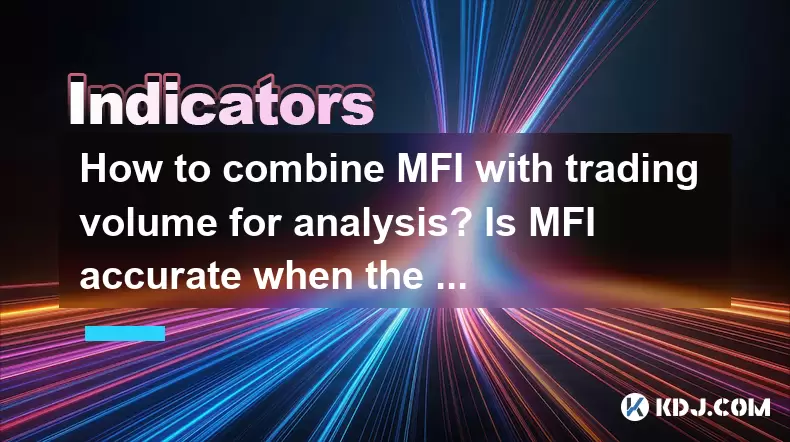
The Money Flow Index (MFI) is a momentum indicator that measures the strength of money flowing in and out of a security. It is often used in conjunction with trading volume to provide a more comprehensive analysis of market trends. Combining MFI with trading volume can help traders identify potential reversals, confirm trends, and spot divergences that may signal a change in market direction. In this article, we will explore how to effectively combine MFI with trading volume and discuss the accuracy of MFI when volume and price diverge.
Understanding MFI and Trading Volume
MFI is calculated by considering both the price and volume of a security. It ranges from 0 to 100, with readings above 80 indicating that the asset may be overbought, and readings below 20 suggesting it may be oversold. On the other hand, trading volume represents the number of shares or contracts traded in a security or market during a given period. High volume often indicates strong interest in a security, while low volume may suggest a lack of interest or a consolidation phase.
To effectively combine MFI with trading volume, traders need to understand how these two indicators can complement each other. MFI can provide insights into the momentum behind price movements, while trading volume can validate these movements by showing the level of market participation.
Combining MFI with Trading Volume for Analysis
Combining MFI with trading volume involves observing both indicators simultaneously to gain a deeper understanding of market dynamics. Here are some steps to effectively analyze these indicators together:
Identify Overbought and Oversold Conditions: Look for instances where MFI crosses above 80 or below 20. When MFI indicates an overbought or oversold condition, check the trading volume. If the volume is high during these conditions, it may confirm the strength of the overbought or oversold signal.
Confirm Trend Reversals: When MFI diverges from price, it may signal a potential trend reversal. For example, if the price is making new highs but MFI is not, this could indicate weakening momentum. Confirm this signal by checking the trading volume. If volume is decreasing while MFI is diverging, it may strengthen the case for a reversal.
Spot Divergences: Divergences occur when the price and MFI move in opposite directions. A bullish divergence happens when the price makes a lower low, but MFI makes a higher low. Conversely, a bearish divergence occurs when the price makes a higher high, but MFI makes a lower high. To validate these divergences, check the trading volume. If volume is increasing during a bullish divergence or decreasing during a bearish divergence, it may confirm the divergence signal.
Analyze Volume Spikes: Pay attention to significant volume spikes in conjunction with MFI readings. If a volume spike occurs when MFI is near overbought or oversold levels, it may indicate a strong market sentiment that could lead to a price movement in the direction of the spike.
Accuracy of MFI When Volume and Price Diverge
The accuracy of MFI can be influenced by the relationship between volume and price. When volume and price diverge, it can create conflicting signals that may affect the reliability of MFI readings. Here's how to assess the accuracy of MFI in such scenarios:
Volume Confirmation: If volume confirms the divergence between MFI and price, it can increase the accuracy of the MFI signal. For example, if the price is making new highs but MFI is not, and volume is also decreasing, this may indicate that the upward price movement is losing steam, making the MFI divergence more reliable.
Volume Disconfirmation: Conversely, if volume does not confirm the divergence between MFI and price, the accuracy of the MFI signal may be compromised. If the price is making new highs but MFI is not, and volume is still increasing, it may suggest that the upward momentum is still strong, despite the MFI divergence.
Contextual Analysis: Always consider the broader market context when evaluating the accuracy of MFI during volume and price divergences. Factors such as market trends, news events, and overall market sentiment can influence the reliability of MFI signals.
Practical Example of Combining MFI and Trading Volume
Let's consider a practical example to illustrate how to combine MFI with trading volume for analysis. Suppose you are analyzing the price chart of a cryptocurrency, such as Bitcoin.
Step 1: Identify MFI Levels: You notice that the MFI has crossed above 80, indicating an overbought condition.
Step 2: Check Trading Volume: You observe that the trading volume is also high during this overbought condition. This high volume confirms the strength of the overbought signal, suggesting that the upward momentum may be nearing exhaustion.
Step 3: Look for Divergences: As the price continues to rise, you notice that the MFI is not making new highs along with the price. This divergence could signal weakening momentum.
Step 4: Validate with Volume: You check the trading volume and see that it is starting to decrease while the price is still rising. This decrease in volume strengthens the bearish divergence signal from the MFI.
Step 5: Make a Trading Decision: Based on the combined analysis of MFI and trading volume, you decide to take a short position, anticipating a potential price reversal.
Using MFI and Trading Volume in Different Market Conditions
MFI and trading volume can be useful in various market conditions, including trending markets, range-bound markets, and volatile markets. Here’s how to use them effectively in different scenarios:
Trending Markets: In a strong uptrend or downtrend, MFI can help identify potential overbought or oversold conditions that may signal a temporary pullback or correction. Confirm these signals with trading volume to ensure the trend’s strength or weakness.
Range-Bound Markets: In a sideways market, MFI can help identify potential breakouts or breakdowns. Look for divergences between MFI and price, and validate these divergences with trading volume to increase the likelihood of a successful trade.
Volatile Markets: In highly volatile markets, MFI and trading volume can help traders navigate rapid price movements. Use MFI to gauge the momentum behind these movements and check trading volume to confirm the strength of the volatility.
Common Pitfalls and How to Avoid Them
While combining MFI with trading volume can be a powerful analysis tool, there are common pitfalls that traders should be aware of:
Overreliance on MFI: Do not rely solely on MFI readings without considering other indicators and market factors. Always use MFI in conjunction with other technical analysis tools and fundamental analysis.
Ignoring Volume Trends: Failing to consider volume trends can lead to misinterpretations of MFI signals. Always check the trading volume to confirm or disconfirm MFI readings.
Misinterpreting Divergences: Divergences can be misleading if not properly validated. Always confirm divergences with trading volume and consider the broader market context before making trading decisions.
Frequently Asked Questions
Q1: Can MFI be used effectively for short-term trading?A1: Yes, MFI can be used for short-term trading, particularly when combined with trading volume. Short-term traders can look for overbought and oversold conditions, as well as divergences, to identify potential entry and exit points. However, it's important to use MFI in conjunction with other short-term indicators and to consider the overall market context.
Q2: How does MFI differ from other momentum indicators like the RSI?A2: MFI differs from the Relative Strength Index (RSI) in that it incorporates both price and volume in its calculation, whereas RSI only considers price changes. This makes MFI a more comprehensive indicator of money flow and momentum. While RSI is also used to identify overbought and oversold conditions, MFI's inclusion of volume can provide additional insights into market strength and potential reversals.
Q3: Is it necessary to use MFI with other technical indicators?A3: While MFI can be used as a standalone indicator, it is often more effective when used in conjunction with other technical indicators. Combining MFI with indicators such as moving averages, Bollinger Bands, and MACD can provide a more robust analysis of market trends and potential trading opportunities. This multi-indicator approach can help confirm signals and reduce the likelihood of false positives.
Q4: How can MFI be applied to different types of cryptocurrencies?A4: MFI can be applied to various types of cryptocurrencies, including major coins like Bitcoin and Ethereum, as well as altcoins and tokens. The key is to adjust the timeframe and sensitivity of the MFI to suit the volatility and trading volume of the specific cryptocurrency. For highly volatile altcoins, shorter timeframes and more sensitive MFI settings may be appropriate, while for more stable major coins, longer timeframes and less sensitive settings might be more suitable.
Disclaimer:info@kdj.com
The information provided is not trading advice. kdj.com does not assume any responsibility for any investments made based on the information provided in this article. Cryptocurrencies are highly volatile and it is highly recommended that you invest with caution after thorough research!
If you believe that the content used on this website infringes your copyright, please contact us immediately (info@kdj.com) and we will delete it promptly.
- Ripple (XRP) in 2026: Hold or Fold? A Look at XRP's Future and Emerging DeFi Alternatives
- 2025-11-08 18:35:01
- Zcash ZEC Coin Price Explosion: From Privacy Niche to Center Stage
- 2025-11-08 18:55:01
- Berachain Price Prediction: Navigating the Honeycomb Hype in Crypto
- 2025-11-08 18:55:01
- Arthur Hayes, Gold, and Bitcoin: A Modern Monetary Trinity?
- 2025-11-08 19:15:01
- Shiba Inu's Next Move: Navigating a Shifting Market
- 2025-11-08 19:20:01
- Pakistan's Crypto Crossroads: Balancing Opportunity with Asset-Backed Realities
- 2025-11-08 19:20:01
Related knowledge
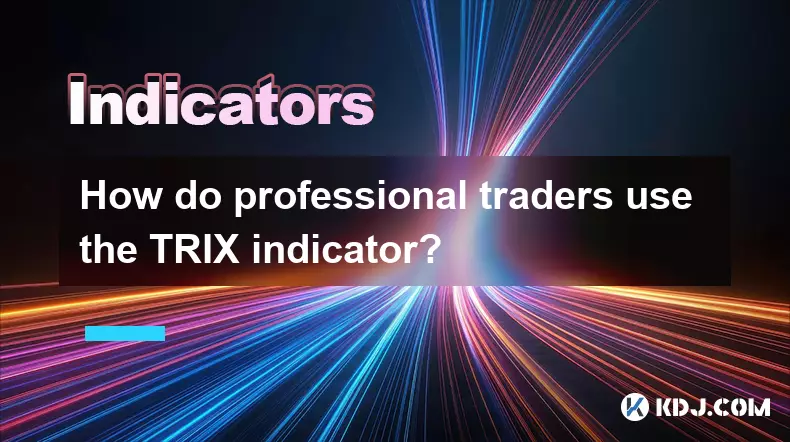
How do professional traders use the TRIX indicator?
Nov 06,2025 at 04:40pm
Understanding the TRIX Indicator in Crypto TradingThe TRIX (Triple Exponential Average) indicator is a momentum oscillator used by professional trader...
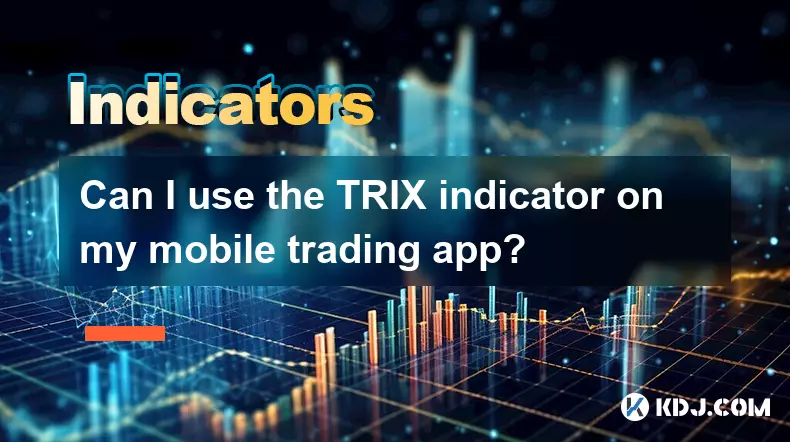
Can I use the TRIX indicator on my mobile trading app?
Nov 07,2025 at 07:40pm
The TRIX indicator, a momentum oscillator designed to filter out short-term fluctuations and highlight long-term trends, has become increasingly popul...
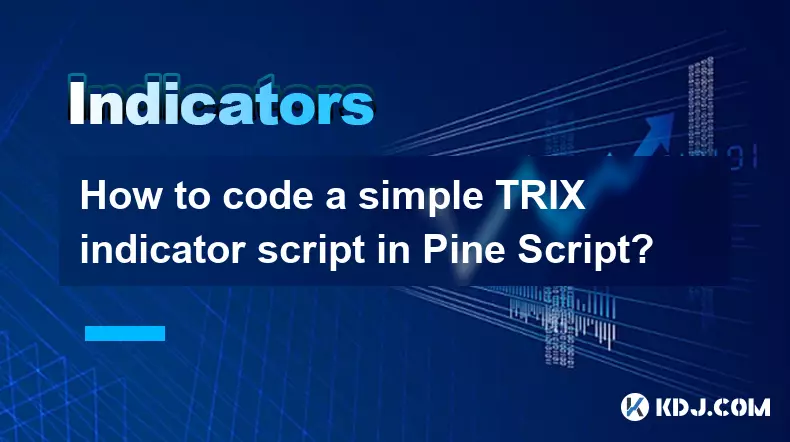
How to code a simple TRIX indicator script in Pine Script?
Nov 07,2025 at 06:20am
How to Code a Simple TRIX Indicator in Pine Script The TRIX (Triple Exponential Moving Average) indicator is widely used in cryptocurrency trading to ...
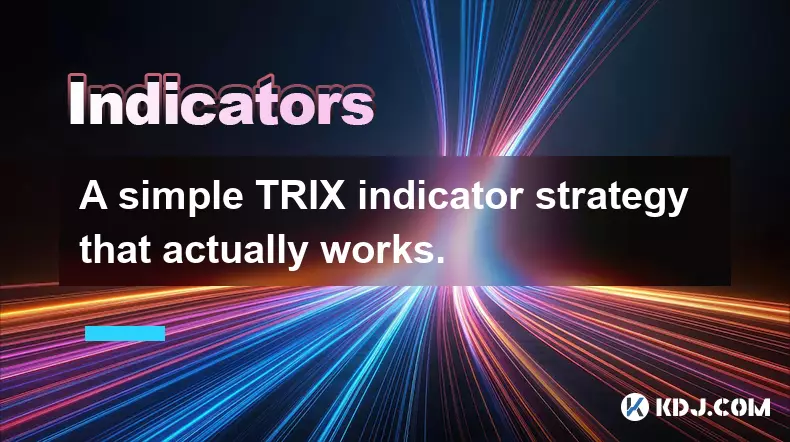
A simple TRIX indicator strategy that actually works.
Nov 08,2025 at 05:39pm
Understanding the TRIX Indicator in Crypto Trading1. The TRIX (Triple Exponential Average) indicator is a momentum oscillator designed to filter out s...
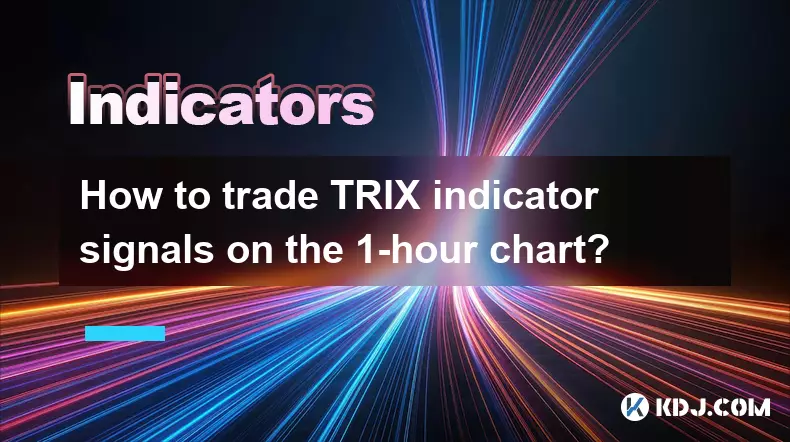
How to trade TRIX indicator signals on the 1-hour chart?
Nov 07,2025 at 05:39am
Bitcoin's Role in Decentralized Finance1. Bitcoin remains the cornerstone of decentralized finance, serving as a benchmark for value and security acro...
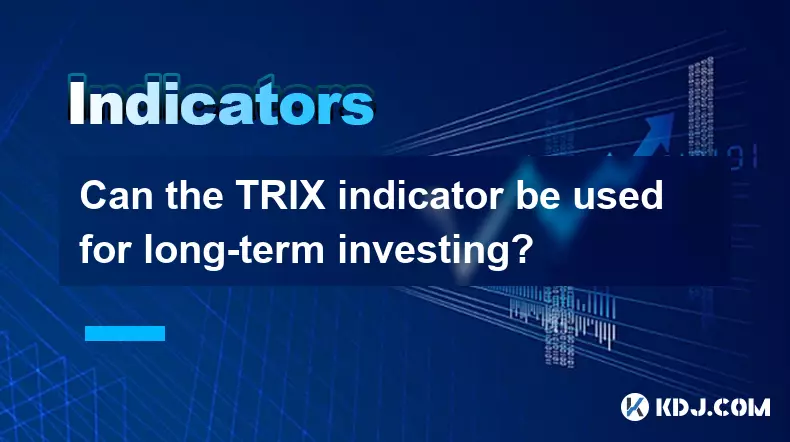
Can the TRIX indicator be used for long-term investing?
Nov 06,2025 at 02:19pm
Understanding the TRIX Indicator in Cryptocurrency Markets1. The TRIX (Triple Exponential Average) indicator is a momentum oscillator designed to filt...

How do professional traders use the TRIX indicator?
Nov 06,2025 at 04:40pm
Understanding the TRIX Indicator in Crypto TradingThe TRIX (Triple Exponential Average) indicator is a momentum oscillator used by professional trader...

Can I use the TRIX indicator on my mobile trading app?
Nov 07,2025 at 07:40pm
The TRIX indicator, a momentum oscillator designed to filter out short-term fluctuations and highlight long-term trends, has become increasingly popul...

How to code a simple TRIX indicator script in Pine Script?
Nov 07,2025 at 06:20am
How to Code a Simple TRIX Indicator in Pine Script The TRIX (Triple Exponential Moving Average) indicator is widely used in cryptocurrency trading to ...

A simple TRIX indicator strategy that actually works.
Nov 08,2025 at 05:39pm
Understanding the TRIX Indicator in Crypto Trading1. The TRIX (Triple Exponential Average) indicator is a momentum oscillator designed to filter out s...

How to trade TRIX indicator signals on the 1-hour chart?
Nov 07,2025 at 05:39am
Bitcoin's Role in Decentralized Finance1. Bitcoin remains the cornerstone of decentralized finance, serving as a benchmark for value and security acro...

Can the TRIX indicator be used for long-term investing?
Nov 06,2025 at 02:19pm
Understanding the TRIX Indicator in Cryptocurrency Markets1. The TRIX (Triple Exponential Average) indicator is a momentum oscillator designed to filt...
See all articles





















![The Graph Price Prediction [GRT Crypto Price News Today] The Graph Price Prediction [GRT Crypto Price News Today]](/uploads/2025/11/07/cryptocurrencies-news/videos/690d4df44fe69_image_500_375.webp)




















































